Situated inside the Kyoto Gyoen National Garden, Kyoto Imperial Palace was the former residence of Japan's Imperial Family until 1869. During the Edo period, many official residences also gathered nearby. By 2016, the palace was officially open to the public without a reservation.
As an incredible landmark in central Kyoto, the Kyoto Imperial Palace can be an ideal place to get a taste of Japanese culture. Delving into this post and discovering more about this Imperial Palace can be one of the best things to do in Kyoto. Start your Kyoto journey and immerse yourself in its impressive architecture!
Table of Contents
Kyoto Imperial Palace Facts
Kyoto Gyoen National Garden & Kyoto Imperial Palace
Why Visit Imperial Palace Kyoto
Must-See Spots at Kyoto Imperial Palace
Best Time to Visit Kyoto Imperial Palace
How to Get to Imperial Palace Kyoto
Essential Guide for Visiting
Kyoto Imperial Palace vs Tokyo Imperial Palace
Nearby Attractions
FAQs about Kyoto Imperial Palace
Kyoto Imperial Palace Facts
Japanese name: 京都御所 (Kyōto-gosho)
Address: 3 Kyoto Gyoen, Kamigyo-ku, Kyoto City, Kyoto Prefecture, Japan
Opening hours:
April-August: 9:00 am-5:00 pm
September and March: 9:00 am-4:30 pm
October-February: 9:00 am-4:00 pm
(last admission at 40 minutes before closure)Closed: Mondays, December 28th to January 4th (random closure for some events)
Entrance ticket: Free entry
Suggested visit duration: 50 minutes
Best time to visit: Spring and autumn
Kyoto Gyoen National Garden & Kyoto Imperial Palace
Kyoto Gyoen National Garden is a park located in central Kyoto, where tourists are free to visit according to the defined route. It can be a mecca for history buffs. During the cherry blossom season, the stunning scenery makes you want to spend all day and linger in this garden. Note that an advanced reservation is required to visit some areas inside the Kyoto Gyoen National Garden.
As one of the most famous Kyoto attractions, Kyoto Imperial Palace sits inside the Kyoto Gyoen National Garden. Except for the palace, the Garden also contains the Kyoto Sento Imperial Palace and the Kyoto State Guest House.
Why Visit Imperial Palace Kyoto
A Living Museum of Japanese History
With over 1,000 years of imperial rule (794–1869), Kyoto Imperial Palace has a rich history and served as an imperial residence. Like many historic buildings in Japan, Kyoto Imperial Palace has gone through fires many times. What we see today was reconstructed in the 19th century.
The Imperial Palace in Kyoto mainly consists of Shishinden (State Ceremony Hall) and Seiryoden (Emperor’s Residence), which formerly served as a site for coronation ceremonies.
Architectural Masterpiece of Heian-Era Splendor
The architectural style of most buildings inside the Palace is a blend of Shinto and Buddhist influences in design, like Takakura-in (Imperial Study) and Kogosho (Court Room). The simple and elegant adornment fully reflects architectural styles during the Heian period (794-1185).
Immersive Cultural Experiences
If you are a history buff, Kyoto Imperial Palace can be a destination you cannot miss during your time in Kyoto. Participate in tea ceremonies, traditional festivals, and guided tours to embark on a Japanese cultural exploration. Also, you can dive into various seasonal events to get a deeper understanding of local culture, like Aoi Matsuri (May) and Jidai Matsuri (October).
Must-See Spots at Kyoto Imperial Palace
The Palace is open year-round, and visitors must adhere to a defined tour route. You should go through security first and into the Seisho Mon Gate. After that, you will visit a variety of famous buildings inside the palace, like Shodaibunoma, Shishinden, Seiryoden, etc. At the end of the route, you will find the Omima and exit through the Seisho Mon Gate.
Shodaibunoma (Waiting Room)
As part of the Kyoto Imperial Palace, Shodaibunoma was the place where officials waited before meeting with Japan’s Emperor. It’s composed of 3 waiting rooms, each room with a distinct name and ranked from highest to lowest: Torama no Ma (Tiger Room), Tsuru no Ma (Crane Room), and Sakura no Ma (Cherry Blossom Room). The Tiger Room was reserved for the highest-ranking nobles.
Shishinden (Ceremonial Hall)
Behind the red cloister and gate sits the highest-status building, Shishinden, which used to be the place for various ceremonies. Its rooftop adopts “hinoki thatching”, a traditional technique. There are two trees planted on each side, including a sakura on the left and a tachibana orange tree on the right. It is said that this arrangement can drive evil spirits away.
Seiryoden (Inner Palace)
Being another attraction in Kyoto Imperial Palace, Seiryoden belongs to the private quarters of emperors, which used to appear in the book, The Tale of Genji. The tatami area in the middle belongs to the emperor’s daily seat. In addition to personal affairs, some events and political affairs are held here as well.
Oikeniwa (Pond Garden)
Used to be a part of Seiryoden, Oikeniwa later became an independent part, which was the place for some academic ceremonies. Featuring the circle design, this garden allows people to appreciate the picturesque scenery centered around the pond. Natural stones, lush greenery, and the zelkova bridge present breathtaking views together in changing seasons.
Otsunegoten Hall
Regarded as the largest building in Kyoto Imperial Palace, Otsunegoten Hall has been used as the emperor’s residence since 1590. The bridges, lanterns, and stones are said to be the tributes dedicated to the emperor. The hall is adjacent to Omima. Once you see Omima, your Imperial Palace tour ends.
Best Time to Visit Kyoto Imperial Palace
Spring and autumn are the best seasons to visit the Kyoto Imperial Palace. During springtime, the palace is adorned with layers of pink petals. A lot of people from Japan and abroad are attracted here to admire this fleeting landscape of cherry blossoms in Kyoto in this season of renewal. It is the best time for you to view this unique scenery while strolling or having a picnic under the cherry blossom tree.
As autumn nears Kyoto, Kyoto Imperial Palace will be blanketed with colorful leaves, which brings a stunning visual feast for tourists. Gradient orange and red leaves are dotted on the pathways, and these Zen buildings are alive with them. The Imperial Palace turns into one of the best autumn viewing spots in Kyoto, drawing numerous people every autumn.
How to Get to the Imperial Palace Kyoto
By Subway
The Kyoto Municipal Subway Karasuma Line to Imadegawa Station (5-minute walk)
The Keihan Oto Line to Jingu Marutamachi Station (15-minute walk)
The Keihan Railway to Demachiyanagi Station (20-minute walk)
By Bus
Kyoto City Bus to Karasuma Imadegawa Bus Stop (7-minute walk)
Essential Guide for Visiting
Opening Hours
Kyoto Gyoen National Garden: Open all day
Kyoto Imperial Palace:
April-August: 9:00 am-5:00 pm (last admission at 4:20 pm)
September and March: 9:00 am-4:30 pm (last admission at 3:50 pm)
October-February: 9:00 am-4:00 pm (last admission at 3:20 pm)
Tickets
The Imperial Palace in Kyoto offers visitors free entry. Tourists can visit the Kyoto Imperial Palace without a reservation. You can explore independently or join free guided tours, which require no reservation. If you are interested in the tour, wait in the visitors' room (on the right of the main gate). It is prohibited to enter any buildings. More details about this free tour are as follows:
Chinese: 10:00 am/2:00 pm
English: 10:00 am/2:00 pm
Japanese: 9:30 am/10:30 am/1:30 pm/2:30 pm
(Free guided tour lasts about 50 minutes)
Photography Tips
No matter exquisite architecture or a picturesque garden landscape is perfect for shooting. To capture the ideal light and shadow, it is advisable to visit the Imperial Palace in Kyoto in the morning or at dusk.
As the lights in the morning tend to be gentle, they can greatly highlight more details of buildings. When sunlight gradually fades away, the golden hues of twilight add a warm filter for your pictures. During this period, fewer crowds make you better enjoy the tranquil environment.
Kyoto Imperial Palace vs Tokyo Imperial Palace
The following table helps you get a better understanding of the differences between the Kyoto Imperial Palace and the Tokyo Imperial Palace.
| Feature | Kyoto Imperial Palace | Tokyo Imperial Palace |
|---|---|---|
| Historical Significance | Imperial residence from 794–1869 (1,000+ years) | Former Edo Castle (built 1457); current imperial residence since 1869 |
| Highlights | Seasonal cherry blossoms in gardens; authentic Heian-era architecture | Iconic Nijubashi Bridge views; Edo Castle ruins |
| Architectural Style | Pure Japanese: Wooden structures, cypress bark roofs | Hybrid: Traditional gardens + modern concrete buildings |
| Size | 110,000 m² (0.11 km²); surrounded by 63-hectare Kyoto Gyoen National Garden | 1.15 km² (Kokyo Gaien National Garden not included) |
| Primary Function | Ceremonial & historical site (coronations until 1869); no longer inhabited | Active imperial residence + administrative hub |
Nearby Attractions
Nijo Castle
As one of the most renowned castles in Japan, Nijo Castle was the home to Shogun Tokugawa Leyasu. Located in central Kyoto, this castle carries a unique historical significance. By 1994, it was designated as a UNESCO World Heritage Site. Nijo Castle features magnificent architecture and gardens, where you can appreciate the luxurious decoration and spectacular Japanese courtyard.
Kyoto International Manga Museum
As the first comprehensive manga museum in the world, Kyoto International Manga Museum can be the mecca for Japanese anime fans. With a collection of 300,000 manga, this museum makes every comic book fan aspire to go on a pilgrimage. Besides, various exhibitions and events are randomly held so that visitors can wander in the comic world.
Shimogamo Shrine
As one of the most important and oldest Shinto shrines in Japan, Shimogamo Shrine is a UNESCO World Heritage Site as well. Surrounded by a deep forest, the shrine is known for the Mitarashi Pond. And many visitors especially come for this, soaking their feet in the pond to flush out sins and illnesses.
Heian Jingu Shrine
Renowned as an iconic symbol of Kyoto, Heian Jingu Shrine ranks as one of the top shrines in Japan and is characterized by its red torii gate. Its main building imitates the original Imperial Palace but is built on a smaller scale. Behind these buildings lies an impressive garden with many cherry blossoms. As spring arrives, it becomes one of the top hanami spots in Kyoto.
Kyoto Day Tour Itinerary
Start your Kyoto tour from Kyoto Imperial Palace, then head to Nishiki Market to embark on your food exploration. After having lunch and shopping for souvenirs at Nishiki Market, take a stroll through Nijo Castle to experience the changing seasonal beauty. As night falls, indulge in kaiseki, a traditional Japanese multi-course dinner, to savor the authentic flavors of Kyoto.
FAQs about Kyoto Imperial Palace
1. Can you enter Kyoto Imperial Palace?
Yes. Kyoto Imperial Palace is open to the public. However, it is available with limited access and is prohibited from entering the imperial buildings.
2. Is the Kyoto Imperial Palace free?
Yes. Kyoto Imperial Palace offers free admission for locals and tourists.
3. Are there English-speaking guides?
Yes. An English guided tour is available. And free multi-language audio guides are also available, like Chinese, Japanese, Korean, and Spanish.
4. What is the imperial palace in Kyoto called?
It is also called Kyoto Gosho and the Kyōto Imperial Palace (京都御所, Kyōto-gosho).
5. Is it wheelchair accessible?
Yes. Pathways and rest areas are wheelchair-friendly. Also, there are accessible restrooms.
Plan Your Kyoto Trip with Hi Five Trip
When it comes to a Kyoto trip, Hi Five Trip can provide you with numerous possibilities. Here we pack some of our best-selling Japan tours, including Kyoto travel itineraries, for inspiration:
No matter whether you prefer the solo or family tour, our travel experts can tailor-made a personal Japan tour for you.

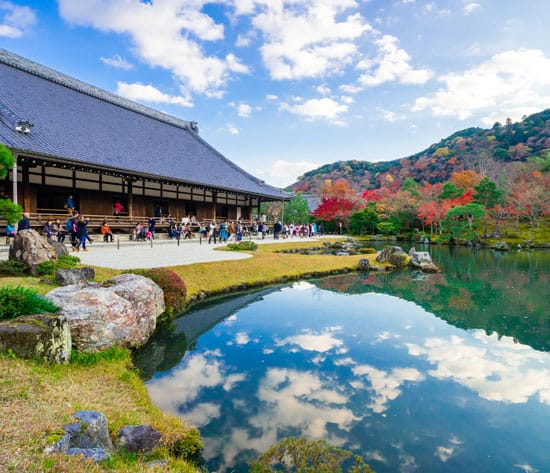
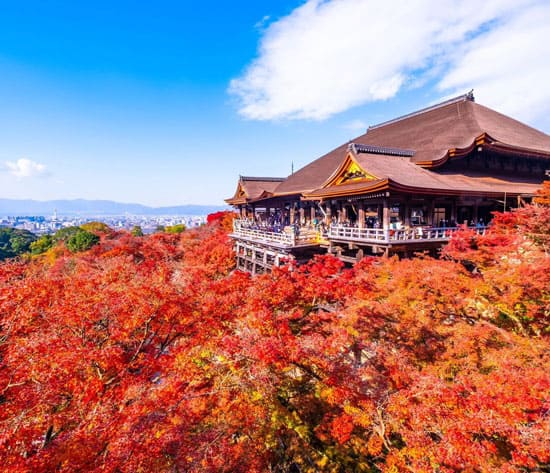
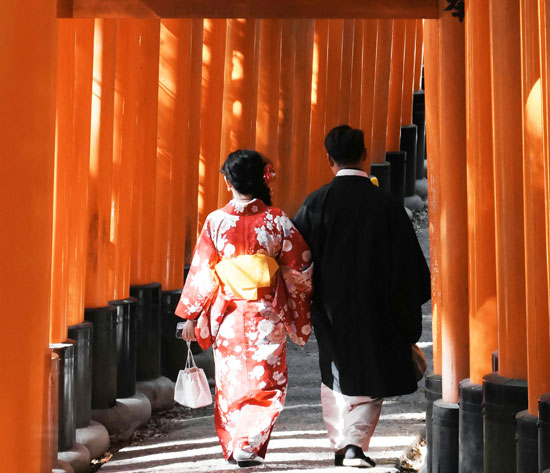
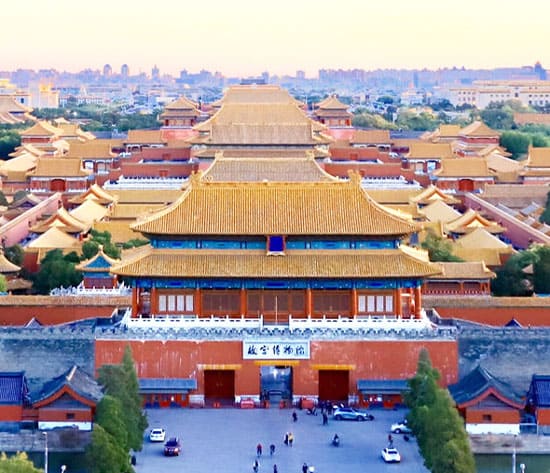
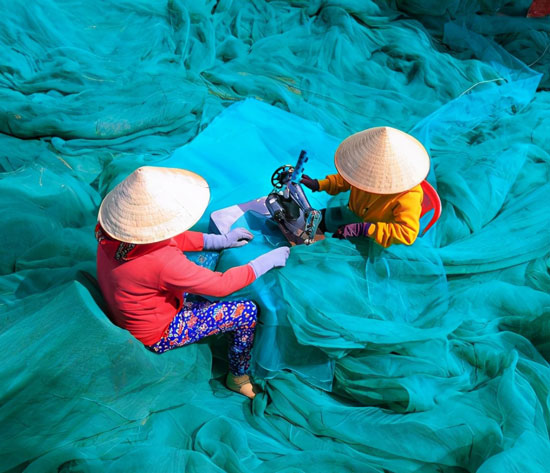
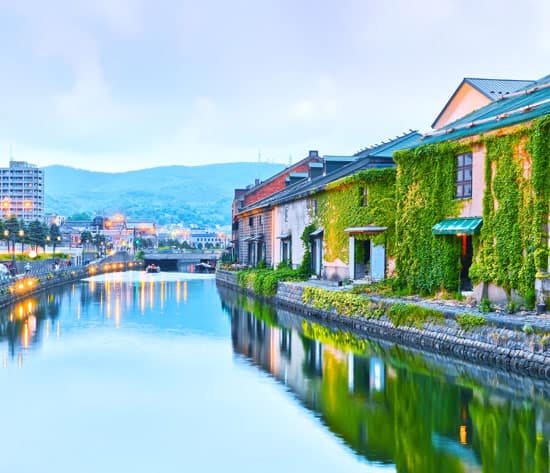
Have a Question?
You might see your comment appear on this page, but your email address and full name will not be published. Your personal information will remain confidential. Our Asia travel experts will get back to you as soon as possible. Required fields are marked *